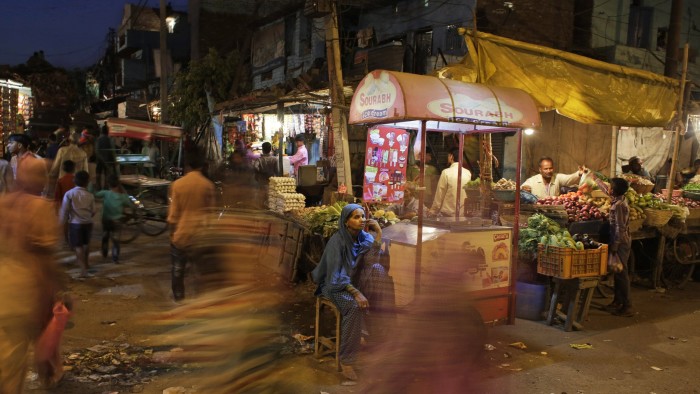Look beyond Turkey for clues to emerging markets weakness

Roula Khalaf, Editor of the FT, selects her favourite stories in this weekly newsletter.
When Federal Reserve chair Jay Powell meets colleagues and counterparts at Jackson Hole this week, investors’ attention will focus on how aggressively he plans to pursue his dual tightening policy.
Fed officials are signalling at least five interest rate rises in the next 15 months. In addition, the steady reduction in the Fed’s still swollen balance sheet continues as the central bank sells off assets acquired since the introduction of quantitative easing in 2009.
Mr Powell’s every word at the end of the retreat, however oblique, will be parsed for meaning by the central banks of the emerging markets. That is because they understand how closely their fates are tied with that of monetary policy in the US.
While many strategists blame Turkey for the current weakness in the currencies of many Asian EMs, it is in fact the combination of the withdrawal of liquidity from developed market central banks, the slowdown in demand from China and, to a lesser extent, the surge in oil prices that account for the pressure on the most vulnerable of these economies.
Since the financial markets of emerging Asia were the biggest beneficiaries of quantitative easing, why wouldn’t they be the victims of the reversal of that policy? The fact that both the US and China are committed to deleveraging is not a good thing for global liquidity.
Each time the central banks tried to unwind their QE programmes over the past nine years, there have been significant dislocations. Meanwhile, the increase in dollar liabilities over that period amounts to about $2tn, according to Bank for International Settlements estimates.
“Whatever the macro idiosyncrasies of Turkey, the key to the current [EM] turmoil . . . is Fed tightening and the strong dollar. The Fed always tightens until something breaks,” said Albert Edwards, head of global strategy for Société Générale in London. “It is usually its own economy, but sometimes it is the EM’s. If it hadn’t been Turkey, it would have been someone else.”
Apart from a less generous Fed, the other shock to EMs comes from Beijing, where authorities are softening, but not abandoning, their deleveraging campaign, even as the Chinese economy slows. The most recent data were not good. The party has never obsessed with gross domestic product in the way most westerners assume; what they, rightly, care about has always been jobs and wage growth. Yet in July, the unemployment rate increased from 4.8 per cent to 5.1 per cent. Retail sales and fixed asset investment were also much weaker than expected.
China, in other words, is not about to save the emerging world as it did in 2009, when it signed off on a debt-driven investment binge that sucked in imports in the form of capital equipment from developed markets, commodities from raw material producers and parts from its neighbours for its electronics supply chain. That is also why copper, along with EM equities, is in bear market territory.
Moreover, “10-year Chinese government bond yield is on the brink of falling below that of the 10-year US Treasury”, noted David Qu, China market economist for ANZ in Hong Kong, with the former at 3.6 per cent while the latter hovers around 3 per cent.
This raises the possibility that the renminbi itself has a lot further to weaken, regardless of utterances from the White House and the latest developments in trade talks. The pace of the most recent slide is faster than that of 2015, JPMorgan noted.
Last year, Chinese corporates, especially property companies with only renminbi revenues, borrowed heavily in the offshore bond market, which Kevin Lai, an economist at Daiwa Capital Markets, likened to “drinking poison to quench one’s thirst” as both the dollar and US interest rates rise.
So far the most vulnerable EMs are India and Indonesia. Last week, the rupee slid to 70 to the dollar, its weakest performance ever, despite the $23bn in foreign reserves India’s central bank spent to support the currency since April. The July trade balance was the worst in five years while the current account deficit for 2018 is likely to reach 3 per cent of GDP, predicts Rohit Garg, India economist at Bank of America Merrill Lynch. India already has a high cost of capital domestically and has relied on foreign inflows to compensate.
“What now concerns us is a resumption of portfolio outflows,” Mr Garg said.
Moreover, since India has never been a strong exporter, the declining value of its currency will not provide a big boost for its economy.
Meanwhile, Indonesia has raised rates four times but its currency still hit year-to-date lows against the dollar.
Even if Turkey does stabilise, there could still be worse to come in Asia.
Comments